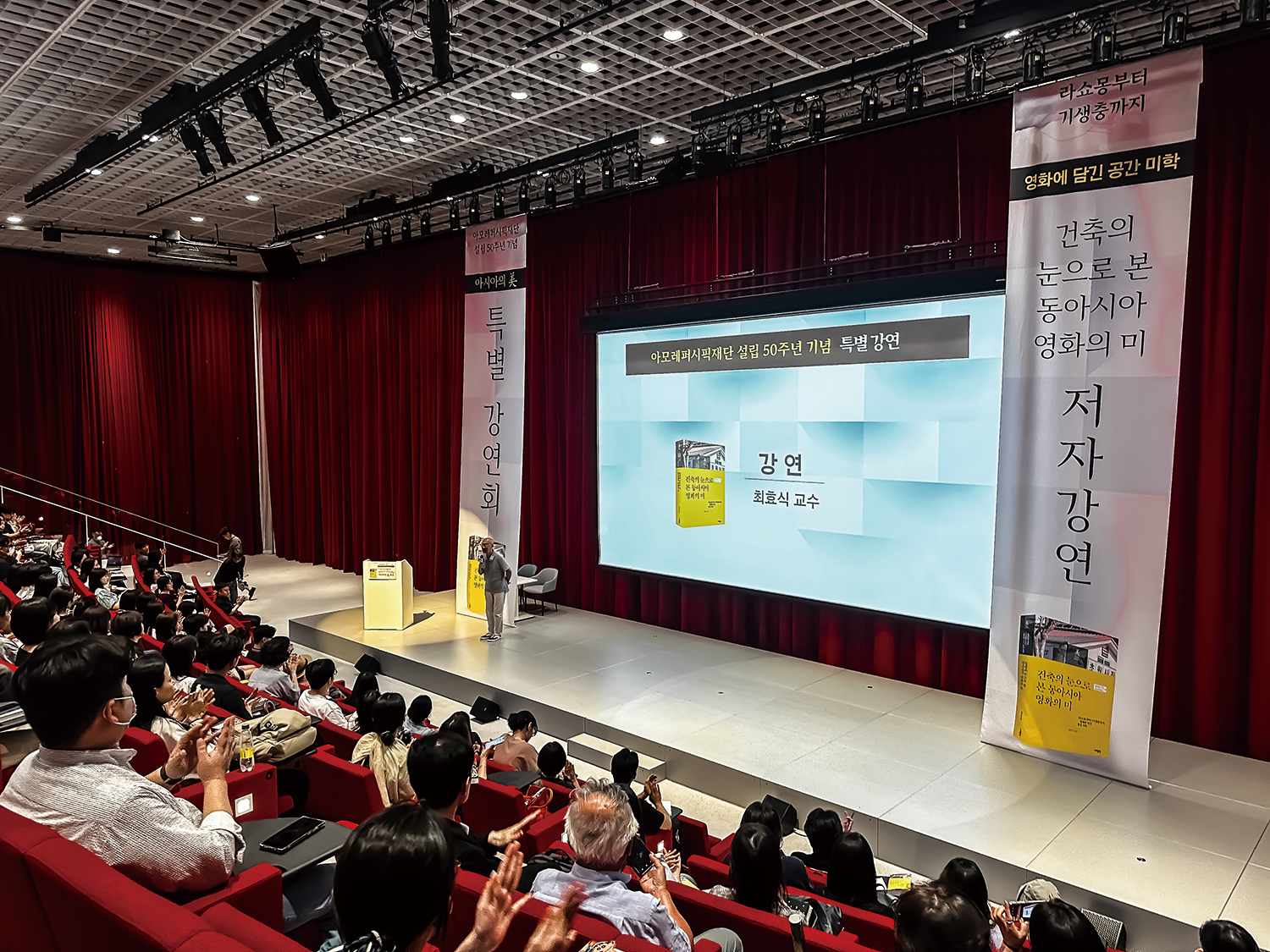SPACE October 2023 (No. 671)

View of lecture commemorating the publication of The Beauty of East Asian Cinema Through the Eyes of Architecture ©Kim Minhyung
An Asian presence in the film industry has a relatively short history. In the early days, Western standards set the criteria for cinema, so Asian cinema found its own voice by blending its unique culture with the direction of Western cinema. During a lecture held at the Amorepacific Headquarters in Seoul on Aug. 24, Choi Hyosik (professor, Hanyang Women’s University), who published The Beauty of East Asian Cinema Through the Eyes of Architecture through Amorepacific Foundationʼs ʻAsian Beautyʼ research support project, explored how architecture and space are portrayed in film through editing, scene direction, and composition and examined the exchange between Western and Asian cinema. During the lecture, comparisons were made between the spatial arrangement of samurai action films and western-style duel scenes in various works by director Kurosawa Akira, and Choi observed a trend in the application of different shooting angles across cultural regions to create a new visual style. In the case of Tokyo Story (1953) directed by Ozu Yasujiro, differences in camera angles reflecting sitting and standing lifestyles were explained. On the other hand, after modernism settled in Korea, what the director of Whispering Corridors (1988) noticed was the plain white school walls with no decorations. Choi suggested that the restrained background direction and focus on characters revealed the cinematic characteristics that contributed to the development of genre films. He praised Oldboy (2003) and A Tale of Two Sisters (2003) for creating unique cinematic narratives by excluding realism and constructing fantastic spaces. However, in a modern society in which regional boundaries are gradually disappearing, how can the unique beauty of East Asian cinema continue to find expression? In response, Choi concluded the lecture by stating that the results accumulated over time will ultimately find expression in regional distinctiveness.





